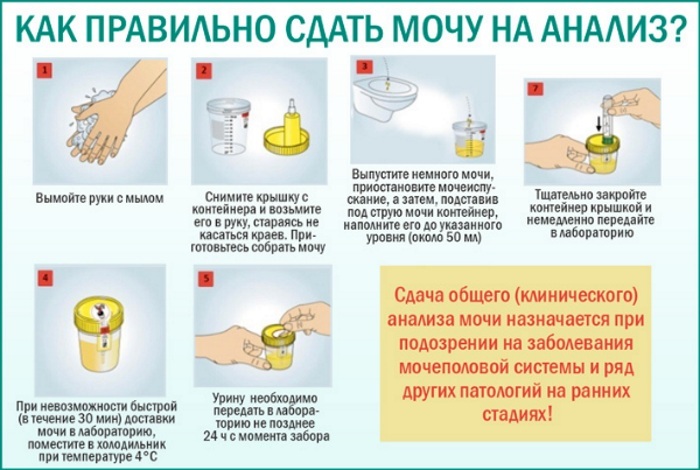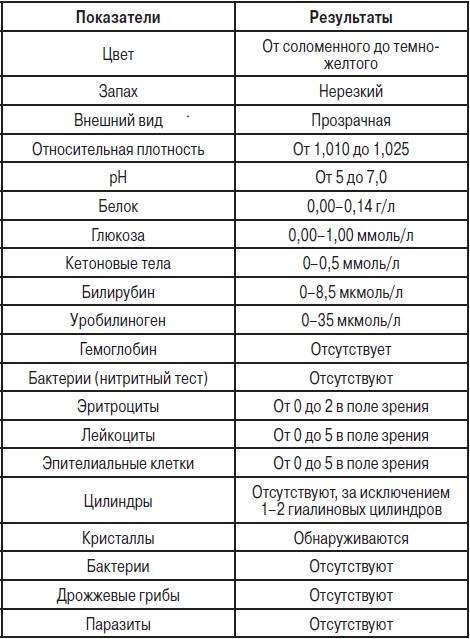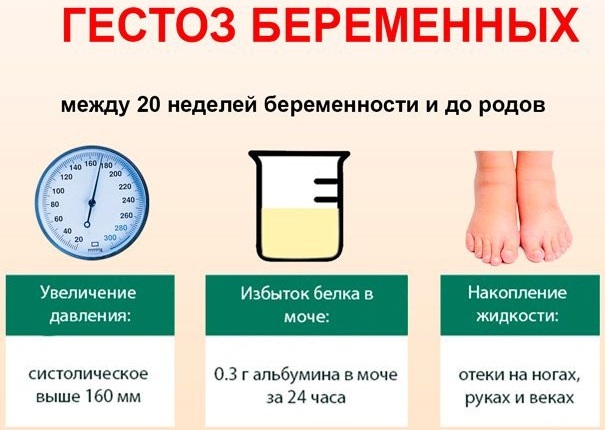Content
- How to properly donate urine for analysis
- What does urine analysis show?
- Deviation from the norm
- Reasons for deviations from the norm
- Consequences
- Special urine tests
- How often to get tested
- Video about bad urine during pregnancy
Every day, together with urine, about 70 dry elements are excreted, including sodium chloride with urea. Its composition can vary with respect to the use of drugs, drinking regimen and diet.
During pregnancy, you need to regularly take a general analysis, in order to timely establish the initial processes of inflammation, for example, the development of toxicosis or urinary tract infections. However, for an accurate assessment of the readings, it is necessary to correctly collect urine, since this becomes the cause of poor information, which will eventually have to be retaken.
How to properly donate urine for analysis
Poor readings can be caused by improperly collected urine. It is required to collect it in the morning. At the same time, one day before taking tests, pregnant women should give up sports, as well as use spicy, sour, salty products, coloring products in the form of carrots, beets and a large amount of meat delicacies.

It is advisable to send a urine sample for examination during the first 2 hours after collection. At the same time, it is not recommended to shake it strongly during transportation. Also collected urine can be within 1 hour 30 minutes. store in the refrigerator compartment, while the temperature should not be less than +4 ℃.
For laboratory examination, it is recommended to collect at least 70 ml of material.
What does urine analysis show?
Bad urine during pregnancy (the reasons are presented for informational purposes) can mean the formation of inflammation inside the body. The test results make it possible to detect problems in a timely manner in order to start treatment.
During the examination, the specialist evaluates many parameters:
- Phosphates are amorphous. Found with an inflamed bladder or vomiting. If the menu is dominated by dairy and plant products, they will also be present in the urine, which is considered normal.
- Bacteria. Their presence is of great importance in diagnostics. The detection of bacteria means that an inflammatory process occurs in the urethra, bladder or kidneys, which must be treated.
- Protein. Its presence is the main criterion for the functioning of the kidneys. Normally, it should be absent. However, a small amount may be present in healthy people. The level of the substance should be no more than 0.033 g / l.
- Bilirubin. It is presented in the form of a blood pigment that appears during metabolic processes and is secreted in the digestive tract along with bile. If the volume of this substance increases, it enters the kidneys, so it can be found in the urine. Often this occurs with hepatic pathologies or mechanical disturbance of the bile outflow.
- Glucose. If everything is in order with the tests, the substance should not be in the urine. However, it can appear in the 2nd trimester, which is considered the norm. This is due to the fact that the cleansing of glucose increases in the kidneys.
- Ketone bodies. Presented in the form of products that appear during the breakdown of fatty acids. If everything is in order with the tests, the substances should be absent in the urine.
- Leukocytes. They are white blood cells. Up to 5 substances can be detected when examining the general analysis. This is considered the norm.
- Nitrite. They are salts of nitrous acid. They do not get into the urine if everything is normal.
- Oxalates. Appear with diabetes mellitus or inflamed kidneys. Also, substances may be present in urine if a pregnant woman regularly consumes foods that contain oxalic acid, such as asparagus, tomatoes, sorrel or spinach.
- Relative density. This indicator determines the volume of salts, mineral elements and various compounds in the urine. The specific gravity should be in the range of 1003-1035 g / l.
-
Tint. If everything is in order with the urine, it will have a yellowish color in different tones. The color will be influenced by the saturation of urine with a special pigment - urochrome. The shade can change with the use of medicinal products. For example, aspirin stains urine pinkish, vitamins a bright yellow hue. However, often a change in shade means the appearance of inflammation processes.

- Transparency. Normally, it should be complete. If the urine is cloudy, it means that it contains fatty drops with bacteria, epithelium, leukocytes, erythrocytes, or salts have precipitated.
- Salt. They are inorganic substances that can precipitate when urine stagnates. Normally, such substances should not be in the material.
- Urata. They can appear in the 1st trimester, in the presence of vomiting or renal pathologies.
- Urobilinogen. It is a product of the transformation of bilirubin. It should be excreted along with bile, so it hardly gets into the urine.
- Cylinders. They are sedimentary components of urine, having a cylinder type. They consist of cells or protein, as well as a variety of inclusions. Normally, they should be absent. However, with kidney disease, it can manifest.
- Red blood cells. Presented as red blood cells. The study may contain no more than 2 red blood cells, which is considered normal.
Deviation from the norm
Bad urine during pregnancy (the reasons for the deviation may be associated with existing pathologies) is found, if the examination revealed substances that should not be:
- Acetone will be detected if food is disturbed, there is poisoning, gestational diabetes mellitus or toxicosis.
- If glucose has been found, follow-up is required to rule out gestational diabetes mellitus. Additionally, you need to pass a biochemical blood test and perform a number of tests.
- If bilirubin was detected, therefore, there was a failure in the liver with its exchange, or there are problems with the gallbladder.
- Nitrite will be detected if an inflammatory process occurs in the urinary system.
- In the presence of a septic process, burns, poisoning, or hemolytic anemia, hemoglobin will be present.
- If bacteria are found, it is required to undergo an additional examination, since their presence means an infectious and inflammatory process occurring in the genitourinary tract.
- When fatty acids break down, ketone bodies are formed. If they appear in the urine, then there has been a failure in protein, fat or carbohydrate metabolism. In their study, it is required to exclude anemia with diabetes mellitus and toxicosis.

A pregnant woman is able to independently determine deviations from the norm by the appearance of urine. For example, with the accumulation of cellular elements in the form of a cylinder, leukocytes, erythrocytes, epithelium or salts, a sediment will be present in the urine. In this case, it will be necessary to exclude metabolic failure, inflammation, or other pathologies. If traces of blood were found, it means that toxic damage or kidney injury has occurred, diabetes mellitus, gestosis, cystitis, pyelonephritis, urolithiasis or glomerulonephritis are present.
Regarding the results of the study, which established the presence of a high volume of leukocytes, erythrocytes, protein, a pregnant woman needs to perform additional diagnostics. In this case, the attending doctor takes smears from the genital tract, prescribes a biochemical blood test and an analysis according to Nechiporenko, as well as an ultrasound examination of the abdominal cavity and kidneys. A consultation with a urologist is also required in order to approach the problem comprehensively and select the most optimal treatment.
Reasons for deviations from the norm
Bad urine during pregnancy (only the attending doctor can determine the causes of deviations) can manifest itself due to the following factors:
-
Gestosis. If there is swelling as well as high blood pressure, protein casts will be present.

- Diet food. To prevent swelling, pregnant women are prescribed a diet low in salt, which affects many processes in the body.
- Circulatory system. If there are problems with blood, this will always be reflected in the analyzes.
- Uterus. During the enlargement of the uterus, the load is on the kidneys and the inferior vena cava.
- Wrong fence. The results of the analysis will be distorted if the genital toilet was not performed or a non-sterile container was used. When collecting, discharge from the genital tract should not be in the urine.
- Nephropathy. Associated with kidney disease associated with high blood pressure. It appears due to a violation of the activity of the placental system, which occurs after 31 weeks.
- Kidneys. In the third trimester, they experience high blood pressure. Therefore, protein will be present in the urine. Due to the fact that the organs function in a very rigid mode, the molecules of the substance are not able to break down.
- Mentaldisorders and pathologies of the nervous system. In the presence of stressful conditions, all internal organs can suffer.
- Toxicosis. If it starts very early, the composition of the urine may change.
Often, in case of deviations, it is enough for a pregnant woman to take a general analysis again. However, there should be no other health complaints.
Consequences
Bad urine during pregnancy (causes of poor urine analysis can lead to serious consequences) is a consequence of the inflammatory process or infection that are present in the body. They pose a threat to the unborn child. In this regard, it is not recommended to neglect this situation, even if the pregnant woman is not worried about anything.
Consequences of a poor urine test:
- High protein levels. With pathologies that are provoked by a high volume of protein, childbirth may be premature or intrauterine growth retardation will occur. Preeclampsia may also occur, which can provoke the death of a woman or a fetus.
-
Pyelonephritis. The presence of a large volume of white blood cells means pyelonephritis. With this disease, the fetus can become infected. In this case, there is a risk of developing hypoxia. In rare cases, pregnancy termination may occur.

- Sugar in the urine. In the presence of sugar, the child can develop diabetes mellitus. If the metabolic process is disturbed in a woman's body, the child will be very large at birth.
- Salts in the urine. If various salts are found, the skeleton of the fetus can be damaged. This indicates that a woman's body cannot cope with the exchange of salts. As a result, the child will not receive the substances that are necessary for his development.
Special urine tests
In case of deviations from the norm, the specialist will prescribe the delivery of special urine tests:

| Analysis type | Why do you need | Collection rules |
| According to Zimnitsky | It makes it possible to clarify the ability of the kidneys to filter and collect urine, as well as to reveal latent edema. The analysis can be prescribed in case of a threat of diabetes mellitus, urinary infection, renal failure or gestosis. Laboratory examination will assess the relative density and volume of urine in each container. | Urine should be collected for 24 hours using 8 cans. It is necessary to take into account the amount of fluid consumed. To do this, a pregnant woman must record how much fluid she drank per day, taking into account vegetables, fruits and first courses. At 6:00 a woman should go to the toilet. The rest of the urine needs to be collected in containers. Each container should be signed and sent for examination. |
| According to Nechiporenko | Able to determine the number of cylinders with leukocytes and erythrocytes contained in 1 ml of material. A specialist can prescribe this analysis if there is a threat of inflammation of the urinary organs, with changes in the analysis. This study is able to provide accurate indications, as well as track the effectiveness of the treatment performed. | Urine should be collected in the same way as for general analysis. |
| Urine culture | It is necessary to determine the volume of bacteria, their variety and the tolerance of antibacterial agents. Sowing is prepared for 10 days. Thanks to this, the doctor will be able to prescribe a treatment course and appropriate medications. An antibiotic with a wide range of applications is used until the results come. If the disease is asymptomatic, the doctor will not prescribe treatment until there are results. | For accurate information, before collection, it is required to process the genitals by covering the vagina with a cotton swab. A sterile jar is required to collect an intermediate dose of urine. The container must be sealed with a lid, sending the material to the laboratory within 2 hours. |
| Rehberg test | It makes it possible to identify the predisposition of the kidneys to filtration. It is prescribed for gestosis, diabetes mellitus, renal pathologies and urinary infections. | Before submitting the material, it is required to completely abandon power loads, strong coffee and tea. Urine should be collected in one jar for 24 hours. The container should be stored in the refrigerator compartment throughout the collection of the material. Then it is required to measure the contents of the jar and mix it well, pouring 100 ml of material into a special container. This volume should be sent to the laboratory. Additionally, it is required to report how much material was collected in 24 hours. You will also need to donate blood from a vein for creatinine. |
How often to get tested
At the stage of pregnancy, it is necessary to take a general analysis several times so that a specialist can monitor the state of the body and health in general:
- in the first trimester, every 28 days;
- in the second and the beginning of the 3rd trimester every 14 days;
- from 35 weeks every week.
Often, a general urine test at the stage of pregnancy is recommended to be taken constantly when going to an appointment with a gynecologist, from registration to the day of birth.

The analysis of urine is considered to be simple in delivery and quite informative for an experienced specialist. If the end results are poor, the attending doctor will be able to establish the causes in time, as well as determine the minimum changes in the woman's body during pregnancy. With timely treatment, you can prevent the risk of developing serious consequences that can adversely affect both the woman and the unborn child.
Video about bad urine during pregnancy
Poor urinalysis during pregnancy:



